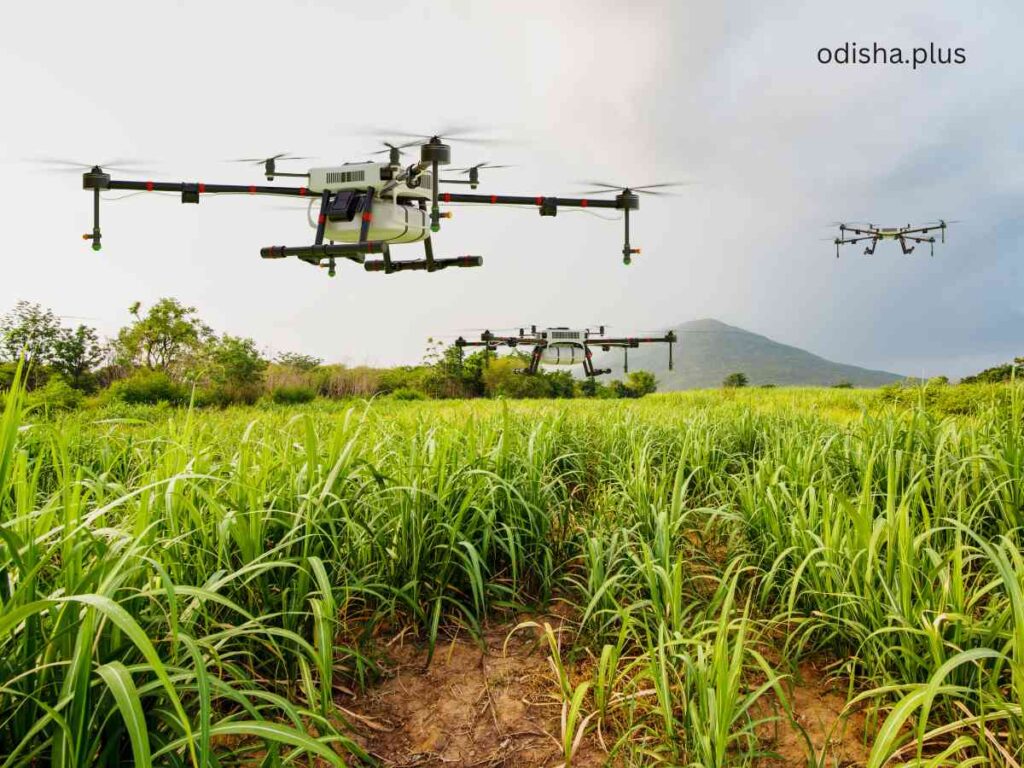Globally, nearly 829 million people, accounting for about 10% of the world’s population, struggle with nightly hunger and subsistence-level existence
Suresh Chandra Sarangi

The specter of Na’anka Durbhikshya, famine, was so terrible and shattering, with skeletal remains of immobile men, women and children that presented a horrific scene that even haunts Odisha students. The permanent scar it left behind is irreversible. It is said that mismanagement by the British Administration added fire to fuel making this the greatest disaster in the history of Odisha. One-tenth of the people in the world face the most debilitating hunger and are not capable of receiving two square meals a day, leading to malnourishment, ill health, destitution and ultimately the cold hand of death allows them eternal sleep.
This is a chronic problem worldwide. Hunger occurs due to mainly disruption in the food supply chain, but other causes like war, poverty, adverse climatic conditions and faulty distribution policy have dealt a severe blow to food sufficiency. The huge food produced today, with the means of all technological development, is not sufficient to feed the entire world population.
Cold Statistics
Statistics show that almost 829 million people sleep hungry every night, which means almost 10% of the world’s population lives a life of below subsistence, and it has been a critical and chronic problem for the world as to how to reverse this threatening problem, which has many social ramifications. It is intimidating that daily, on average, 25000 citizens of the world, including 10000 children die either due to an onslaught of hunger or hunger-related illness or other problems.
That’s quite frightening. This is a shame on our civilization, and despite all scientific development and technological breakthroughs, people die out of hunger. So much so that after the COVID-19 pandemic hit India, the government of India provided ration freely to utmost 80 crore people. The fear of threatening food inflation does not allow RBI and the monetary policy committee to reduce the policy rate, and this is all account of food.
The problem is unmanageable and appears in front of us as a real challenge to humanity, on top of it food costs are exorbitantly high, beyond the means of millions and that raises a question sometimes, mainly the slogan rising from the left-oriented activists, who is responsible. The greatest philosopher on Earth, Karl Marx once said man must eat to live and all other worldly issues arrived from that. Marie Antoinette, wife of Louis XVI, when told about hungry people had remarked if bread is not available give them a cake. This is an irony of fate, for those destitute.
Even Mahatma Gandhi said that poverty is the worst form of violence against humanity. The crisis faced by the teeming millions during the COVID-19 pandemic and the non-availability of food was inhuman and distressing. Much of the cognitive damage has happened, of late, due to the partial availability or non-availability of food that jeopardizes the future of mankind.
Women & Children
Victor Hugo’s novel Les Misérables provides a vivid portrayal and explains how economic shocks are prime drivers of food insecurity. Many sub-Saharan country’s inability to address the food shocks is genuine and the question arises that economic shocks can be minimized, if not dealt with 100%, if the primary job of agricultural activity can be improved with sufficient food production and if supply management can be effectively overseen by the Food and Agriculture Organisation, then most of the problems arising out of food insecurity can be met with squarely. 80% live in areas that are prone to climate change. FAO has estimated that of those affected by hunger, two-thirds are women and children. To intensify the campaign against the flames of hunger, the Hunger Project, designated May 28 as World Hunger Day.
In his authorized biography, titled “The Man Who Fed the World”, Ron Hester tells the story on Nobel Peace Prize laureate Norman Borlaug and his battle to end hunger. The Noble laureate tried to discover new varieties of paddy, thereby saving the lives of more people-hundreds of millions-from starvation than any person had done in history. Most oblivious to what Malthus said regarding population growth, Normal Bourlaug was critical of the population monster, where, during his time the world population had gone from 1.4 Billion to 6.4 billion.
He was apprehensive of the fact that at this pace, the world would cross 10 billion by the year 2100 and where from all the food will come unless there is a silent agricultural revolution as to how to increase food production exponentially. He said that agricultural scientists have a moral obligation to warn politicians, educationists, religious leaders about the magnitude and seriousness of inflation & food scarcity and the availability of food to the population, which is increasing geometrically.
Not that human civilization is facing food scarcity for the first time, it has remained quite a daunting challenge all through the ages. Our body needs protein, carbohydrates iron, calcium, vitamins and minerals to keep us healthy, failing which there may be an infection, terminal illness and cognitive damage. There are different stages of agriculture, and it has developed from quite simple ways of crop production to a very complex stage, where technology plays a crucial role by which agriculture has been transformed to meet the ever-expanding horizon of adequacy of food.
This is exemplified in the case of the green revolution as Normal Borlaug did it or the green revolution as engineered by MS Swaminathan in India, saving millions from food scarcity and hunger. The most important thing that happened in Food 3.0 is the use of fertilizer, seeds, pesticides and insecticides. The application of chemistry in agriculture was a great achievement in the history of the progress of agriculture on the planet.
Yield Drag
Greenhouse gas balance and use of carbon dioxide to increase production and productivity, nitrogen fixation helped crops to grow abundantly. Scientists have done crop rotation, for higher production. The use of animal manure helps in bringing quality crops, which is better than fertilizer-driven crops. But the history of Sri Lanka speaks regarding the calamities associated with it that resulted in the economic debacle of that country. It then amply proved that chemical fertilizer is the answer to the ‘yield drag’ fomenting food deficit.
Modern scientists say that agriculture can be infinitely sustainable if there are no chemical campaigns to tear the soil structure and nutrients must be injected properly for growth. However, it is believed that the application of organic compost and chemical fertilizer would drive the cultivation of GM crops, the most suitable newer answer for bringing an agricultural revolution. Agriculture scientists think that complete organic farming may not be a successful and sustainable long-term agriculture practice.
The fourth phase of genetic engineering dramatically changed food production as well as food like Bt cotton and Bt brinjal, profusely protested its health hazard, which ceiling its fate with uncertainty and doubt. In his book Food 5.0, the author writes the future belongs to GMO crop. And he, through his logic, proves it.
See the galloping population growth, which needs to be fed and traditional farming cannot meet the requirement of a burgeoning population. They propose that the homo-sapiens need to come out of the claws of hunger. Cross-pollination, hybrid farming and mutagenesis, whose origin is in biotechnology, shall take food production to greater heights. The tug of war between organic farming and GMO crops continues and in the great style, the poor, unequal, malnourished and starving millions are churned out under the saga of human politics.
Biotechnology Use
Food crisis and food insecurity are a reality and ways to maximize food production are of utmost importance along with distribution and supply chain management. When the evolution of agriculture is seen, in the primitive era humans knew how to plant a seed, in the machine era humans discovered how to till soil and bring more space under agriculture, in the era of chemistry playing a Yeoman’s job, we got pesticide.
Improved productivity of the soil, in the genetic engineering era, the seed was metamorphosed but in the 21st century, we need a convergence of all these to revolutionize productivity and production, by use of biotechnology.
More diversity in crop production and in particular when with varieties of dishes as food habits have changed, more diversity in food production is the need of the hour. Simultaneously, we have to emphasize livestock production, taking into consideration the growing demand for protein. We can grow those crops as thrust areas and ensure the cultivation of plant-based protein, which is the need of the hour.
Finally, precision agriculture, where sensors, robots, and drones can expedite food production to meet the seamless requirement of food for a growing population, would be a befitting answer to world hunger and food insecurity.
(The writer is a retired banker and lives in Bhubaneswar. Views expressed are personal)




























